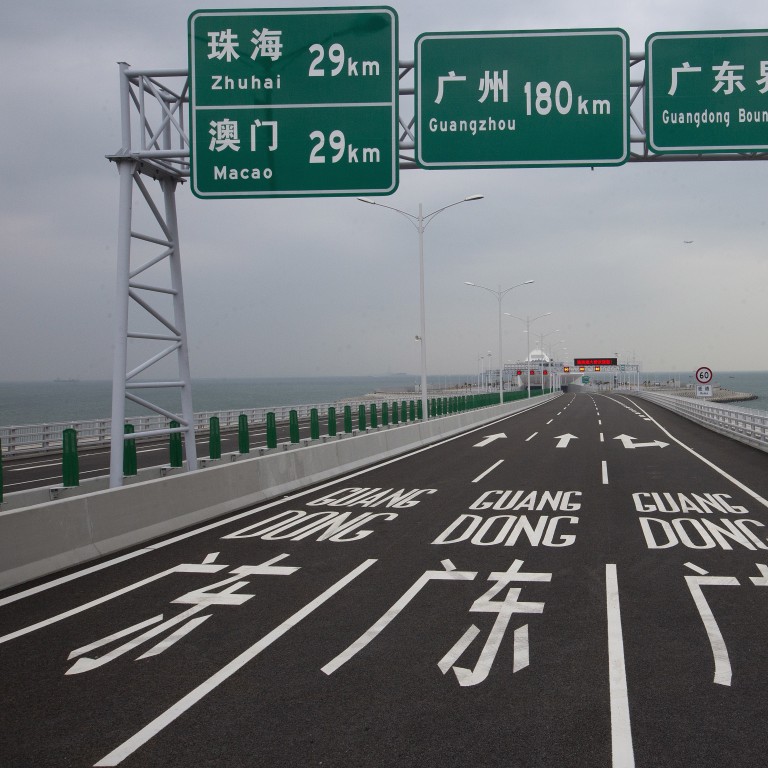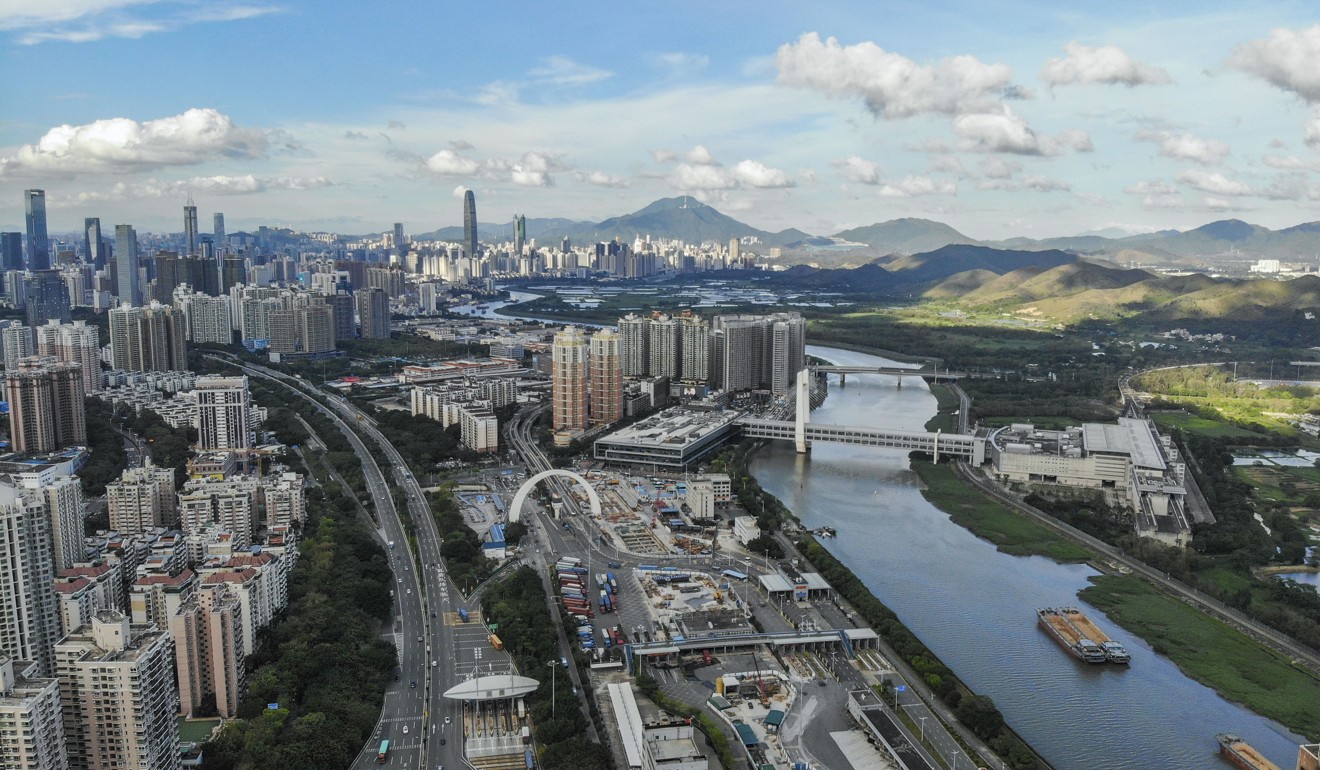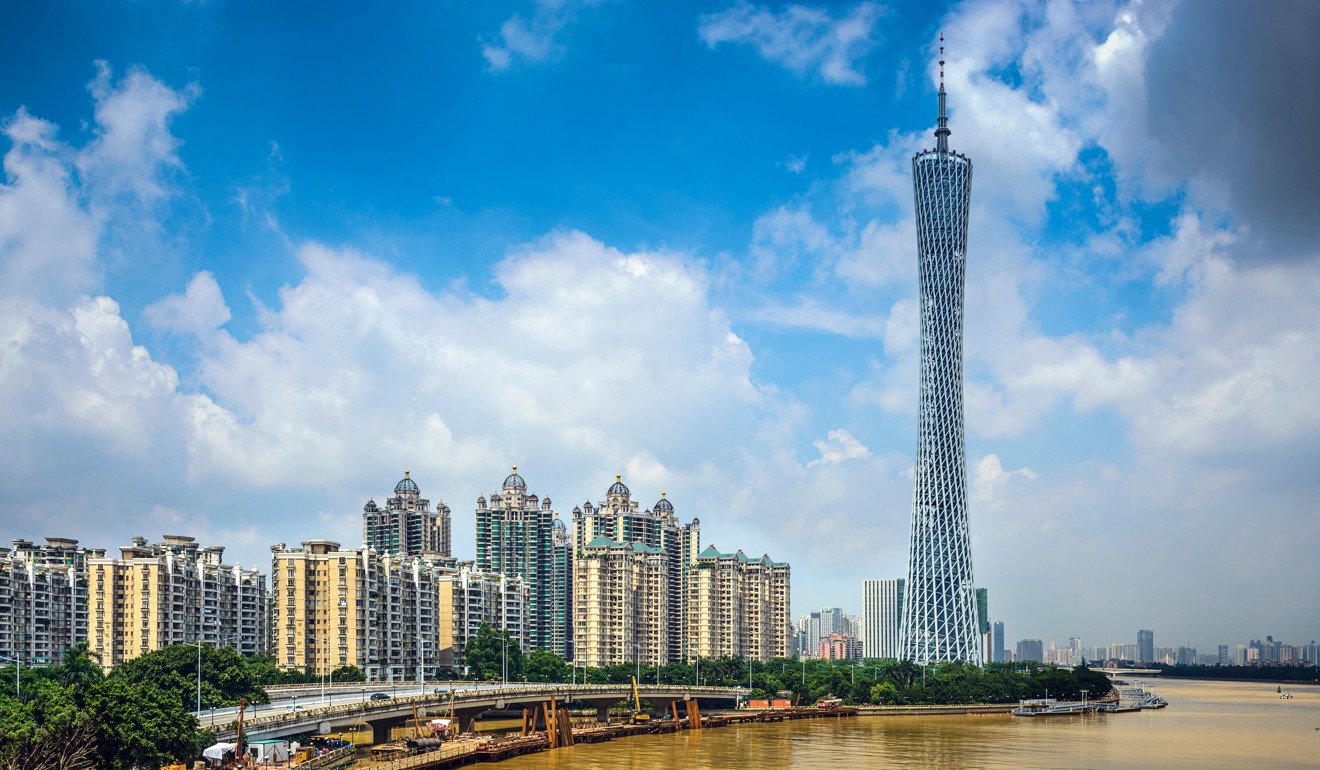
Hong Kong’s role in Beijing’s Greater Bay Area scheme spelled out: focus on strong suits of finance and trade; cooperate with Shenzhen and Guangzhou
- City told to build on its areas of strength as much anticipated blueprint unveiled
- Cautious endorsement from local businesspeople, along with acknowledgement that specific details are yet to arrive
The twin ambitions for Hong Kong in the “Greater Bay Area” blueprint announced on Monday are to seize new areas of economic growth and improve living standards.
Reacting to the plans, Hong Kong professionals and businesspeople gave a cautious endorsement, but pointed out they needed to see the specifics to gauge how the city could benefit.
“We are actually a bit disappointed. It’s just a framework without many concrete policy details,” Felix Chung Kwok-pan, leader of the pro-business Liberal Party, said. “The positioning of Hong Kong has got clearer, but we can only wait for how it is to be achieved.”
The highly anticipated document acknowledged the city’s pivotal role in providing international standards in many areas for others to aspire to. But it made plain that much work lay ahead in enhancing its competitiveness in traditional strong suits.
Beijing finally lays out China’s ‘Greater Bay Area’ plan
The plan, which covers 11 cities in the Pearl River Delta, supports Hong Kong in entrenching its status as an international finance, transport and trade centre as well as an aviation hub, promoting the development of high-end and high-value-added financial, commercial, trading, logistics and professional services.
In innovation and technology, the push is for the city to strengthen its research and development capabilities, enabling local institutes to enjoy the same level of funding as mainland ones. There will also be help for start-ups, at the incubation stage, in getting private equity funding, and securing public listings.
In terms of connectivity, the plan says the government will build a rapid transport network within the bay area, and work on reducing travel time among major cities to an hour or less. It will also work out a new model for clearance procedures to ensure the smooth movement of people.
The development of high-end maritime services such as ship management and leasing, ship finance and marine insurance is also spelled out. The plan called for synergy among the city, Shenzhen and Guangzhou with positive interaction of ports and airports in the region, without going into details.
Beyond these lofty plans for the economy, the blueprint also set out how the bay area would become a vibrant environment for “developing a quality circle for living, working and travelling”, with emphasis placed on ease of movement and living spaces that are environmentally well planned.
Hong Kong and Macau residents who are Chinese nationals are also encouraged to take up positions at state enterprises on the mainland, and further study will be done on allowing Hongkongers to work in mainland public services. They are also encouraged to work and run businesses across the border, with the possibility of teachers being allowed to teach in Guangdong, with the right qualifications.
Talent is unwilling to stay in Hong Kong. The salary is not attractive, while we have so much administrative work to do
Hongkongers interviewed on Monday welcomed the blueprint, saying there was a lot for the city to seize upon to capitalise on its international status and world-class universities. But they warned there could be obstacles ahead, including unintended competition within the area, especially with Shenzhen.
Professor Wong Kam-fai, associate dean of engineering at Chinese University, believed Hong Kong had what it took to succeed in the bay area project.
“Hong Kong as an international city could be the driver in the upper research stream while the mainland cities could use their manpower to work in the lower stream,” Wong, also a national adviser as a member of the Chinese People’s Political Consultative Conference, said.
Citing a survey showing Hong Kong universities were among the top 10 in the world in terms of published work and the impact of their artificial intelligence research, Wong said the city’s scholars, with their international networks, could help attract foreign technology companies.

He saw Hong Kong’s free flow of information, with free access to tech giants such as Facebook, Google and Twitter, as among its key strengths, while enterprises and tech start-ups could progress to get their ideas to market in the bay area cities and tap the enormous mainland market.
However, Professor Henry Wong Nai-ching, former dean of science at Chinese University, warned against complacency in Hong Kong, with other cities, especially Shenzhen, poised to get ahead. He lamented that the faculty had just lost a physics department chairperson to a Shenzhen university, and warned of further, similar departures to come.
“Talent is unwilling to stay in Hong Kong. The salary is not attractive, while we have so much administrative work to do,” Wong, also a founding member of the Academy of Sciences of Hong Kong, said.

He blamed government red tape around funding applications, noting that key laboratories on the mainland were granted funds after a simple certification process while city laboratories had to jump many complicated hurdles, wasting time and energy.
While Wong Kam-fai was confident Hong Kong still had the edge as an international city with the rule of law, he warned its high living costs would be a deterrent.
Local researchers and scientists were encouraged by the blueprint, but businesspeople looking for tax sweeteners were left disappointed. The plan did not touch on the tax disparity, as the mainland has a higher tax rate – a drawback for many Hongkongers keen to try working or living across the border.
Kuo Wai-keung, a Hong Kong businessman who co-founded a start-up based in Qianhai, Shenzhen, had hoped the authorities could introduce a system of “Hong Kong tax for Hong Kong people”, to reduce their tax burden and ease capital flows between the mainland and Hong Kong.
“The plan noted the need for capital to move. There is still much space for detailed measures to be implemented,” Kuo said.

